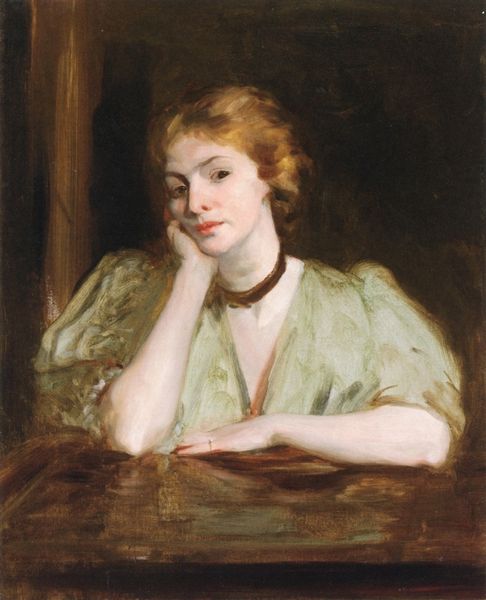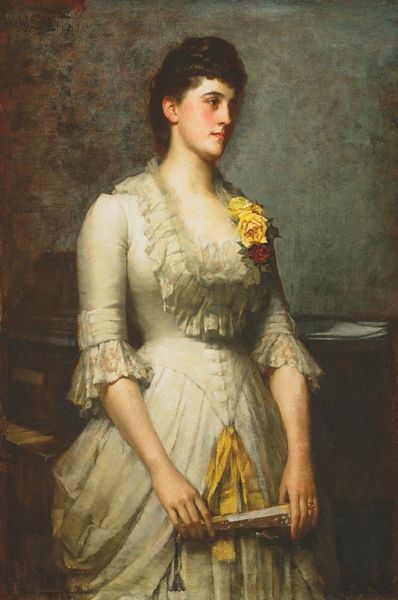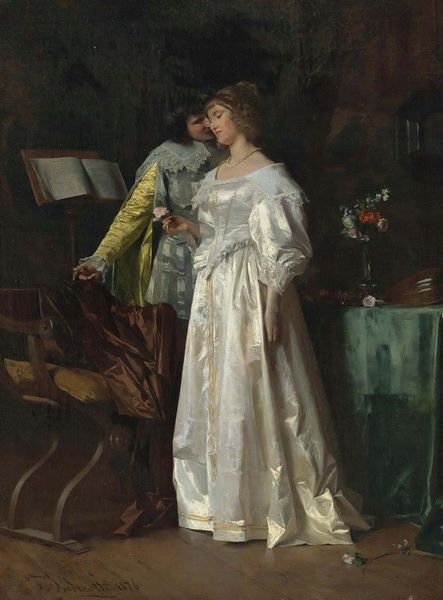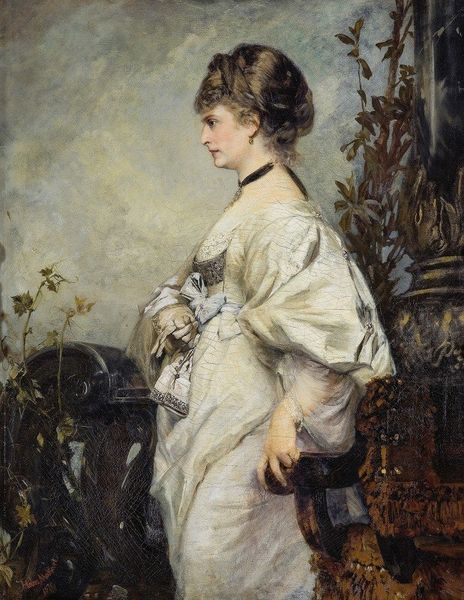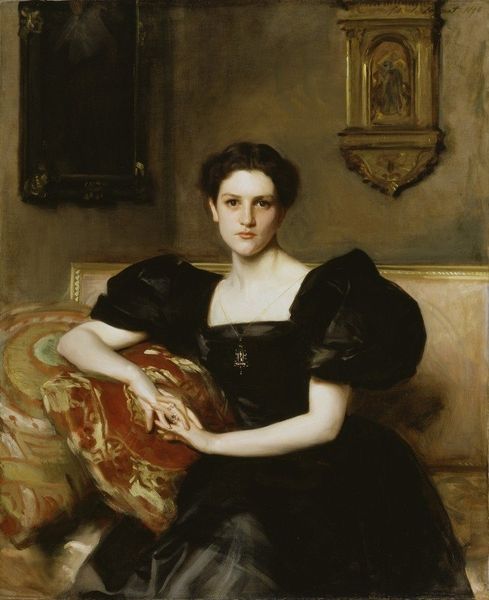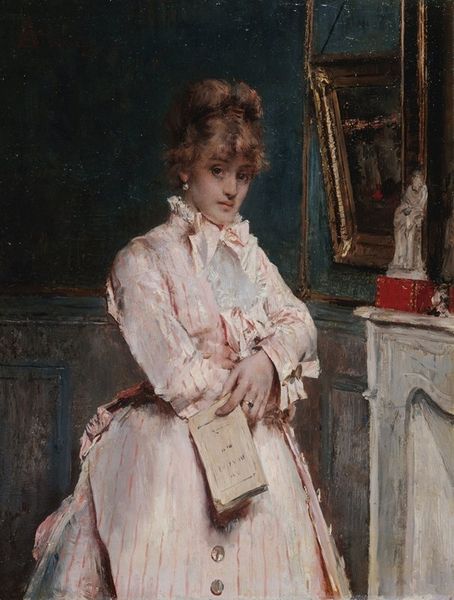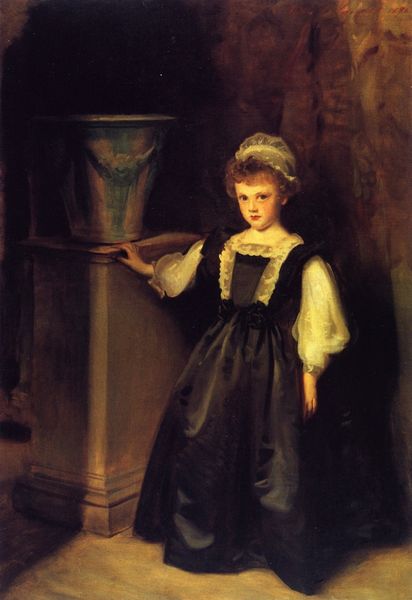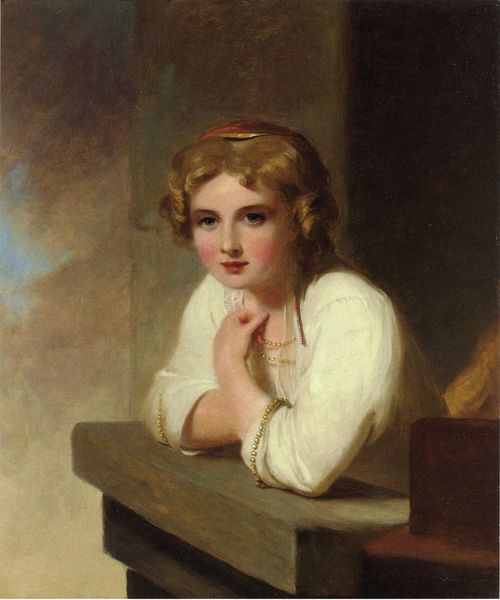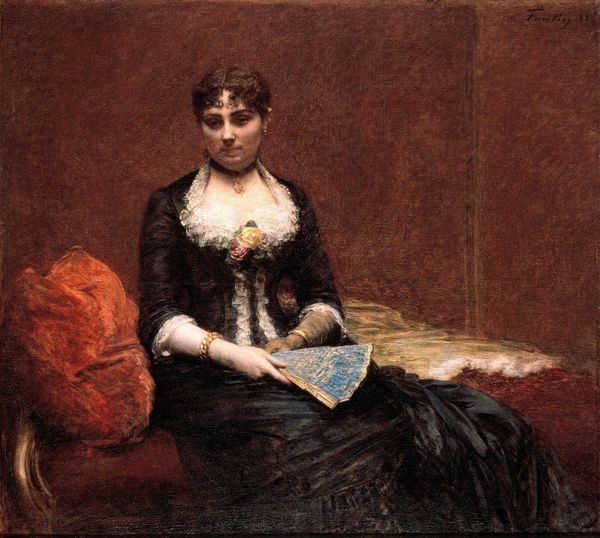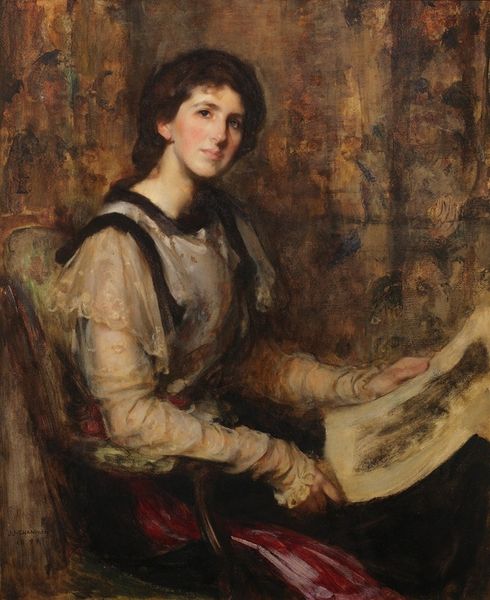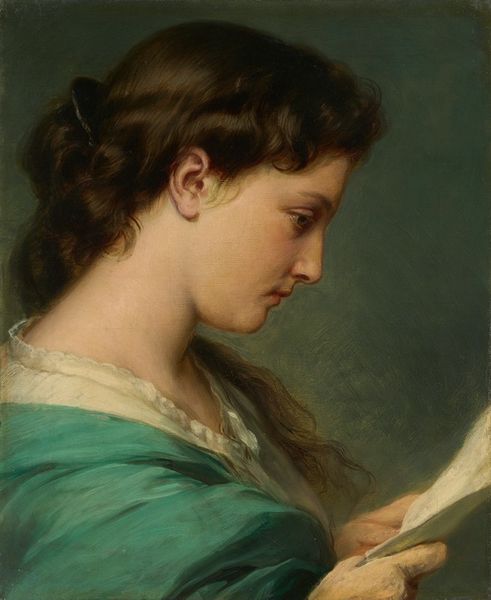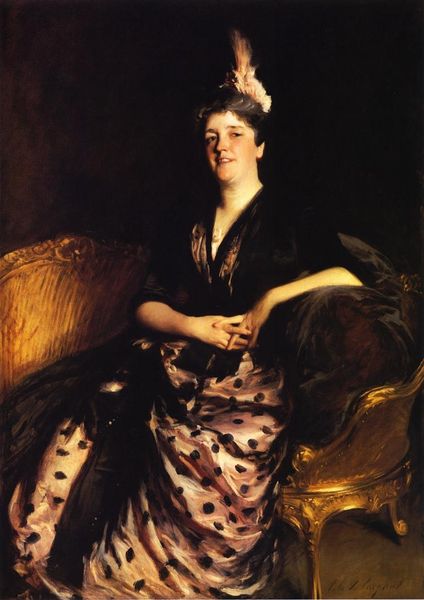
Copyright: Public domain
Curator: Today we’re looking at Alfred Stevens' "Reverie," painted in 1854. Editor: It strikes me as a very intimate, quiet scene. The young woman's gaze is soft, but there's a distinct focus in her eyes. And the textures—the sheen of the silk skirt against the dark velvet of her bodice. It suggests affluence, but the scene also whispers of unspoken thoughts. Curator: Stevens often explored the interior lives of women within the context of 19th-century bourgeois society. "Reverie," with its subdued palette and emphasis on domesticity, encourages us to consider the restricted roles available to women and their psychological responses. How does this figure contend with a world seemingly laid out for her? Is she content or resistant? Editor: The very choice of materials—the silk, the velvet, even the vase—speak to that restricted world, don’t they? The means of acquiring these commodities, the labor involved in their production and even the cultural messages the ownership transmits. Silk production and processing in particular had a very material affect in this period, shaping and organizing entire populations through the work they engaged in. It makes you question what kind of labor allowed someone like this woman to have access to luxury items, the leisure time implied in the "reverie". Curator: Precisely. It's vital to remember that paintings like these, depicting upper-class life, conceal so much of the global network that enabled it. We see this woman in her private world, which seems timeless, while simultaneously existing in a rapidly changing historical period. Her pose is reflective. Editor: Thinking about that network of producers also reminds us of how artificial distinctions of 'high art' obscures labor, for Stevens the means of art making through pigment is also shaped by colonialism and a network of work, as the objects surrounding this women are produced with that same infrastructure. Is the labour put into creating this oil painting inherently of more value than the work involved with sewing or creating vases or even textiles? Curator: It’s a powerful tension. In this moment, she becomes representative, almost a site where all these competing systems and anxieties converge. Art, commodity, colonialism, gender - all made to feel "natural" yet deeply constructed and loaded. It is worth contemplating. Editor: Seeing these artworks allows us to look critically into labor, capital and aesthetics intersecting into our own present. What labour does our own moment try to mask from itself? Curator: It's a vital question and Stevens’ "Reverie" holds that kind of critical self reflection in its image. It's both of and separate from it. Editor: The material processes have much to say about labor involved on all sides of Stevens work. That feels relevant.
Comments
No comments
Be the first to comment and join the conversation on the ultimate creative platform.
